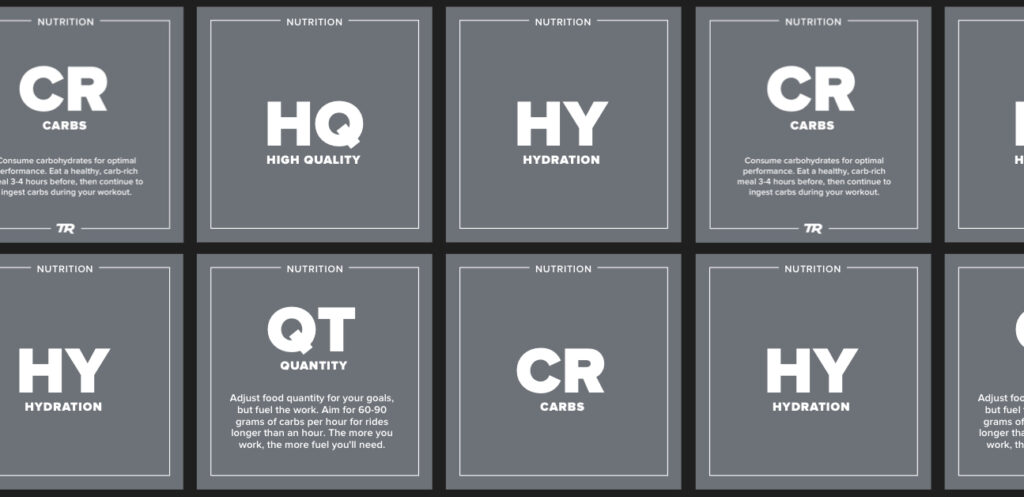How to Reach Optimal Body Composition

Overall weight doesn’t tell the whole story for endurance athletes. Understanding Body Composition and its impact on performance is an important step in optimizing your training and racing.
For more on Body Composition and other topics check out Ask a Cycling Coach Ep 231
What is Body Composition?
Body composition is the proportion of fat to nonfat-substances in the body and actively improving body composition can make you a faster cyclist. Burning fat will have a positive effect on body composition while burning protein and muscle mass will have a negative effect.
Instead of focusing on just losing weight, cyclists should prioritize improving body composition as well. This means that while their weight may fluctuate or stay stagnant, over time they are increasing lean muscle mass and decreasing fat through proper training and nutrition.
Body Composition and Power to Weight Ratio
Traditionally, cyclists focus on their power-to-weight ratio (W/Kg) as an indicator of performance potential and numeric ranking against other athletes. While increasing your W/Kg should be a high priority, improper focus on your power to weight ratio can be counter productive as it only takes into account your overall weight, and not your body composition.
Additionally, you can increase your power to weight ratio through weight loss without getting faster. This happens when you are losing muscle mass or sacrificing proper nutrition and freshness to reach a weight goal. Conversely, if your weight remains stagnant but you are actively losing fat and gaining muscle, you will likely become faster.
How to Measure Body Composition
This is why we recommend that athletes use DEXA scan data or a bioelectrical impedance scale to track body fat opposed to merely tracking weight. Tracking your body fat is the best way to understand how your body composition is changing in response to your training and eating.
Nutrition and Carbohydrates
To avoid losing muscle mass, proper nutrition on and off the bike is important. A balanced diet proportionate to the work you plan on completing allows you to productively maintain your training load. This means optimizing how much you eat and what you eat on both recovery days and big training days. Restrictive dieting on training days or even recovery days can hinder the productivity of future workouts, and your training plan as a whole.
As your season goes on, eating patterns will change, just as your training plan and volume does. Serious athletes periodize their nutrition just like they do their training, and adjust their eating to the demands of their training. Throughout the season this will consistently include eating a variety of high quality nutritious foods that continuously balance the workload you complete.
Endurance athletes have a different relationship with carbohydrates than other athletes do. Because endurance athletes will and do burn high amounts of carbs during high intensity workouts, it is important to consume carbs while trying to burn fat. In addition to this, if you are not consuming enough carbohydrates you may smell ammonia on your breath – a sign of protein metabolism.
An athlete striving to build lean muscle mass, and burn fat will want to integrate an appropriate amount of carbohydrates into their diet. In terms of the amount of carbohydrates needed to adequately fuel your workouts, researchers have referenced a theoretical limit of about 90g of carbohydrate every hour during endurance exercise. Some research has shown you can go beyond that limit without experiencing detrimental side effects, but depending on your body’s current abilities, you may need to start lower. For example, you could start at around 60g of carbohydrate an hour during exercise and then work your way upward as your training increases.
As for the amount of carbohydrates you should be taking in outside of your workouts, we recommend systematically adding more carbohydrates during pre-workout meals and paying close attention to the RPE (rate of perceived exertion) of your workouts. You will know you are on the right track with nutrition, when you are able to increase carbohydrate consumption without an increase in body fat, and your RPE becomes lower for the same workouts.
Conclusion
Depending on your goals and current body composition, improving your lean to fat tissue ratio can be a long process. It can even take multiple years to reach your “optimal body composition”. Opposed to focusing on body composition day to day or even month to month, athletes should approach body composition from a long term perspective. It is also an individual process and varies from person to person, and there is no defined number for a given height or type of athlete.
Despite the variations, every person can actively improve their own body composition by being disciplined with their nutrition, sticking to a structured training plan and maintaining balance. The combination of these things will lead to improved performance.
For more cycling training knowledge, listen to the Ask a Cycling Coach — the only podcast dedicated to making you a faster cyclist. New episodes are released weekly.


